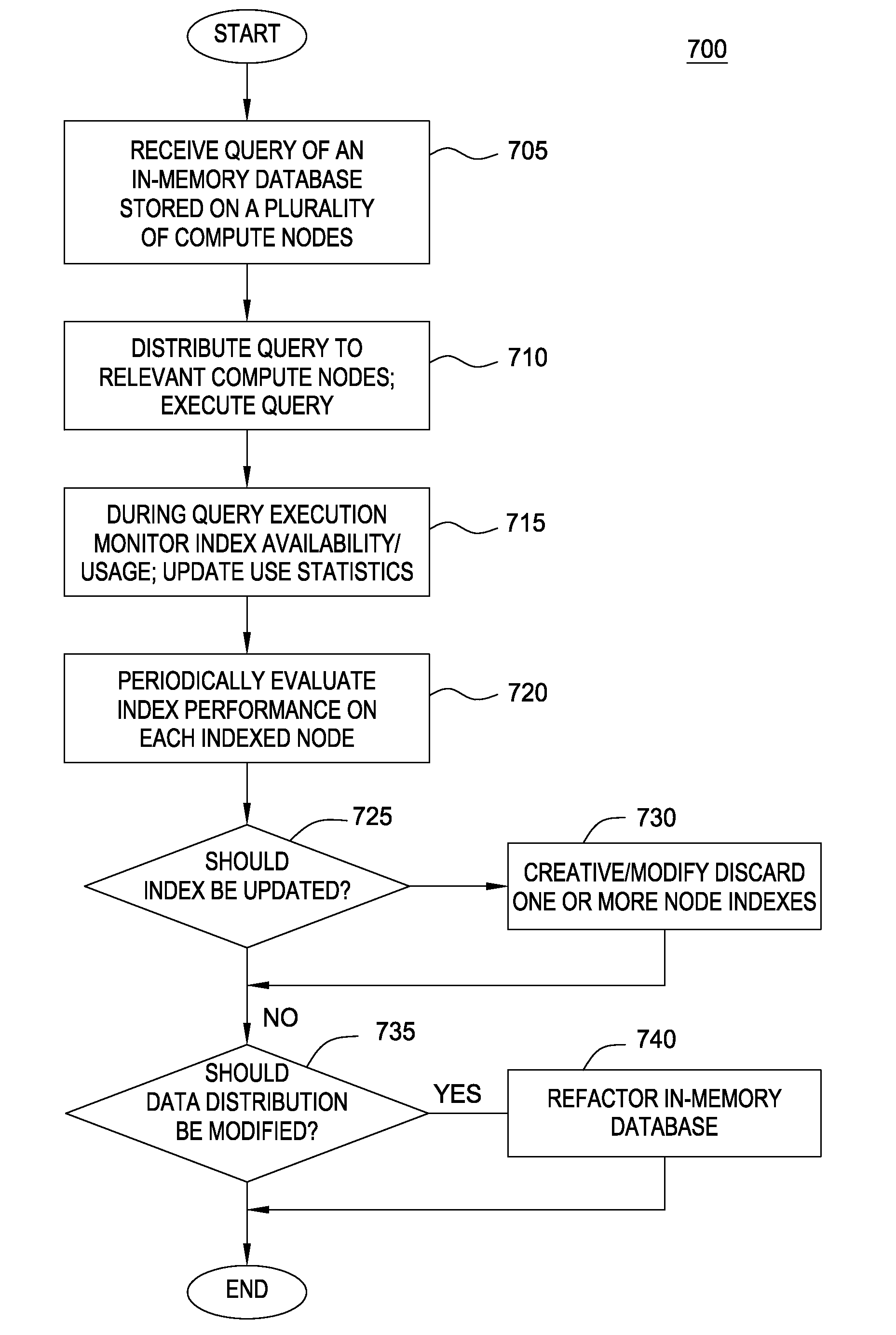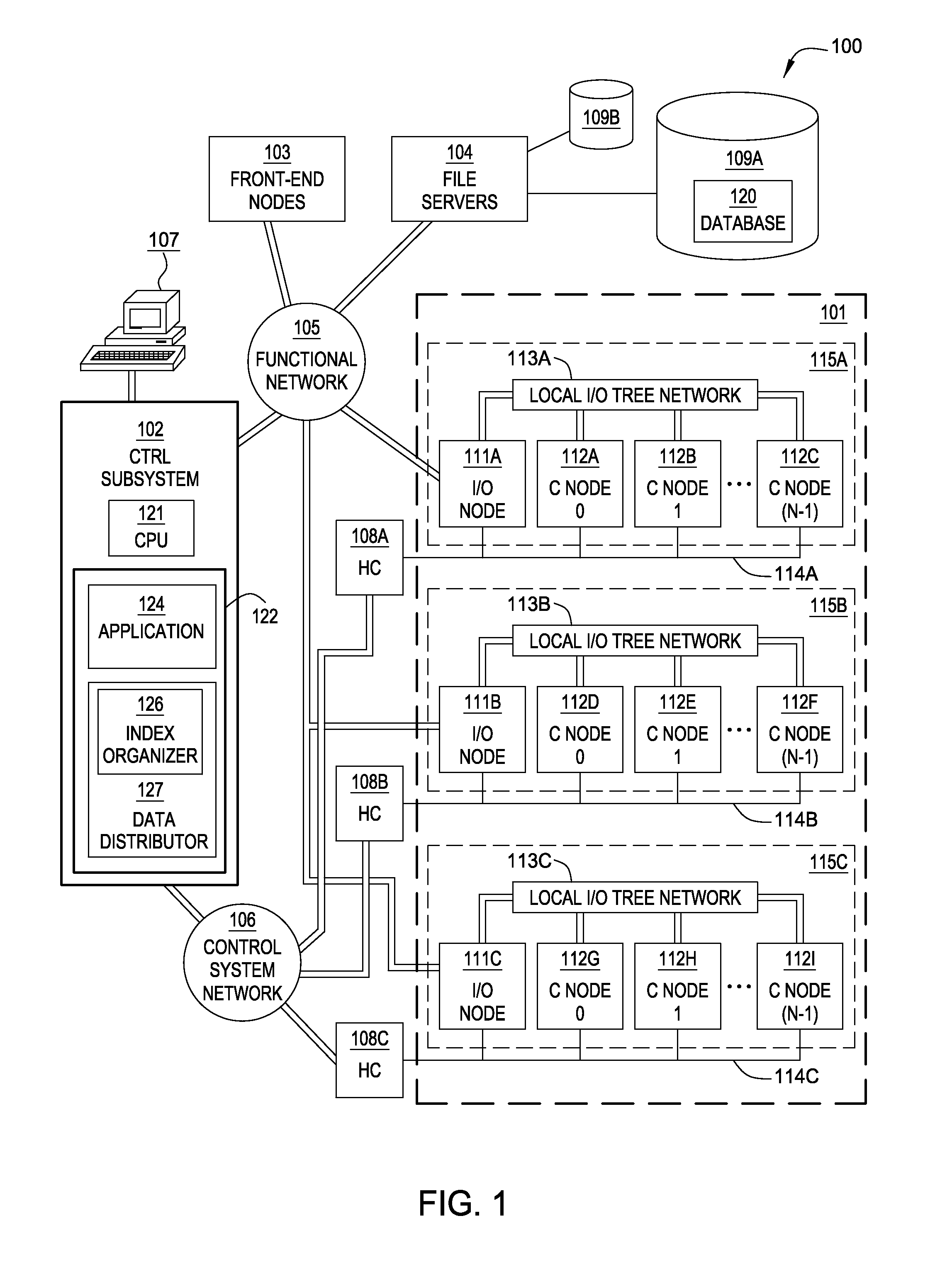Partial indexes for multi-node database
a database and database technology, applied in database indexing, instruments, computing, etc., can solve the problems of indexing in some cases offering little, if any, benefit, adversely affecting the performance of dbms as well as applications, and requiring space in memory or disk for indexes
- Summary
- Abstract
- Description
- Claims
- Application Information
AI Technical Summary
Benefits of technology
Problems solved by technology
Method used
Image
Examples
Embodiment Construction
[0017]Embodiments of the invention enable a database spread over multiple nodes to allow each node to have different indexes over the data in tables, depending on how each node would benefit (or not benefit) from having the index(es). For example, as with a conventional database, users may create an index for a table by specifying which column(s) of a table to create the index over. However, depending on how a large table is distributed across multiple nodes, the value of an index may differ. In one embodiment, when the table is spread across the nodes of a multi-node or distributed system, each node maintains only the portion of the index relevant to that node. Further, upon redeployment of the data across the compute nodes, the indexes at each node may be rebuilt. Doing so allows the database system to intelligently trade off between consuming space for the index on a node and the usefulness of having an index on that node.
[0018]Further, in one embodiment, historical statistics ma...
PUM
 Login to View More
Login to View More Abstract
Description
Claims
Application Information
 Login to View More
Login to View More - R&D
- Intellectual Property
- Life Sciences
- Materials
- Tech Scout
- Unparalleled Data Quality
- Higher Quality Content
- 60% Fewer Hallucinations
Browse by: Latest US Patents, China's latest patents, Technical Efficacy Thesaurus, Application Domain, Technology Topic, Popular Technical Reports.
© 2025 PatSnap. All rights reserved.Legal|Privacy policy|Modern Slavery Act Transparency Statement|Sitemap|About US| Contact US: help@patsnap.com



